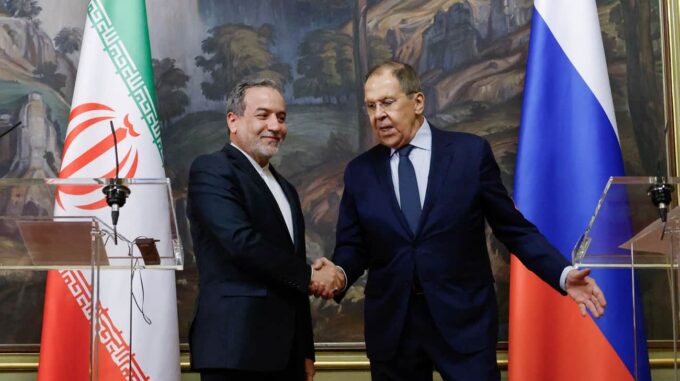Iran is preparing to transfer a significant new arsenal of missile systems to Russia, focusing on launchers for the Fath-360 ballistic missiles

According to Reuters, which relies on information from two Western security officials and one regional official, this scenario is not just speculation but a highly probable plan that could be implemented soon. If confirmed, this would mark an important step in the escalation of military cooperation between the two countries, both already in a state of conflict with Ukraine. Sources indicate that in the near future, Tehran will hand over Fath-360 missile launchers to Moscow. These missiles have a substantial range of up to 120 kilometers. This characteristic makes them particularly valuable for Russian forces, as they can be used to swiftly target Ukrainian infrastructure, military facilities, and civilian objects in frontline areas. By September 2024, Iranian ships delivered a significant number of these missiles to Russia — nine vessels transported ammunition under the Russian flag. However, at that time, Reuters sources denied that the launchers originated from that shipment. It is likely that this refers to a separate, additional transfer of equipment aimed at boosting Russia’s military capabilities. Experts note that possessing Fath-360 frigates would allow Russia to reserve more modern and strategically important missiles, such as the Iskander, for long-range strikes on key Ukrainian infrastructure. This would complicate Ukraine’s air defense operations, as Russian troops could more quickly and effectively carry out pinpoint strikes on energy facilities and critical infrastructure. Military analysts say that acquiring and deploying Fath-360 missiles would offer several key advantages for Russian forces. They would be capable of quickly and easily hitting targets since these systems do not require complex training and have an extremely short flight time. This would significantly increase the efficiency of Russian strike operations, providing them with new mobile and easy-to-use tools. Specialists emphasize that the development of Fath-360 is designed so that these systems can be operated with minimal training, making them especially convenient for rapid attacks or use not only by military personnel but also by amateurs, particularly in wartime conditions. Such technologies can fundamentally alter the course of hostilities, increasing mobility and speed in delivering strikes against Ukrainian defenses. Thus, the transfer of Fath-360 launchers to Ukraine opens new horizons in modern war technology. The Kremlin is likely aiming to strengthen its positions in eastern Ukraine, using these new systems for quick and precise strikes, further complicating the situation for Ukrainian command and defense forces. While the US officially reports that Russia has received over 400 short-range ballistic missiles of Iranian origin, possibly including the Fath-360, research and analysis indicate that this support has evolved with the transfer of launchers. The lack of public confirmation regarding the scale and types of missiles currently in Russian possession leaves the matter open to speculation and heightens international concerns about increasing military integration between these two authoritarian regimes. Meanwhile, experts and military analysts warn that if Russia can actively deploy the Fath-360 system in its campaign against Ukraine, it could make Ukrainian defenses more vulnerable and shift the balance of power on the battlefield. Maintaining more modern long-range missiles and the ability to respond quickly to tactical targets threaten the security of critical infrastructure, which is vital for the survival of the Ukrainian population under current circumstances. Overall, this Iran-Russia cooperation step already raises significant concern worldwide, as it enhances the capabilities of pro-Russian forces and could significantly influence the course of the conflict in Ukraine. The question remains whether Kyiv can find additional diplomatic or military responses to counteract this trend. Exact answers are not yet available, but it is clear that in modern warfare, new technologies—including missile systems—are becoming critical factors for victory or defeat.

